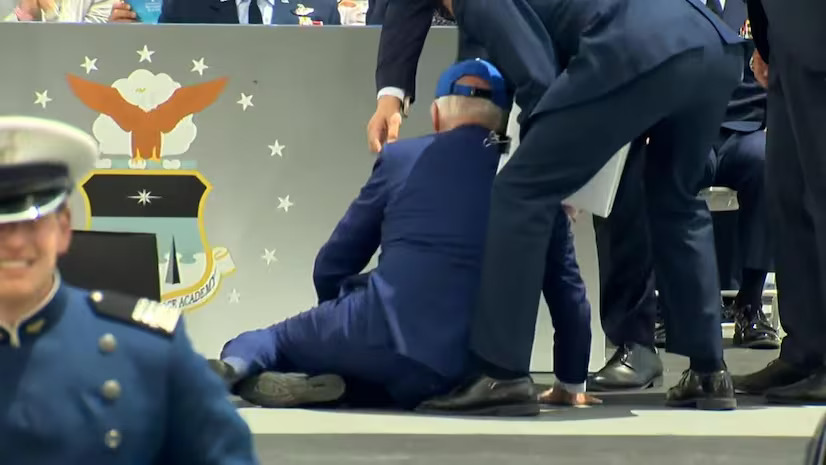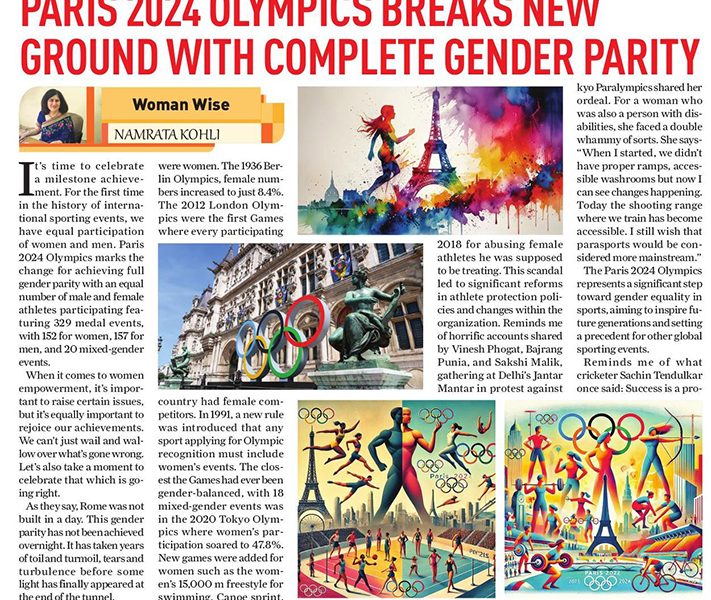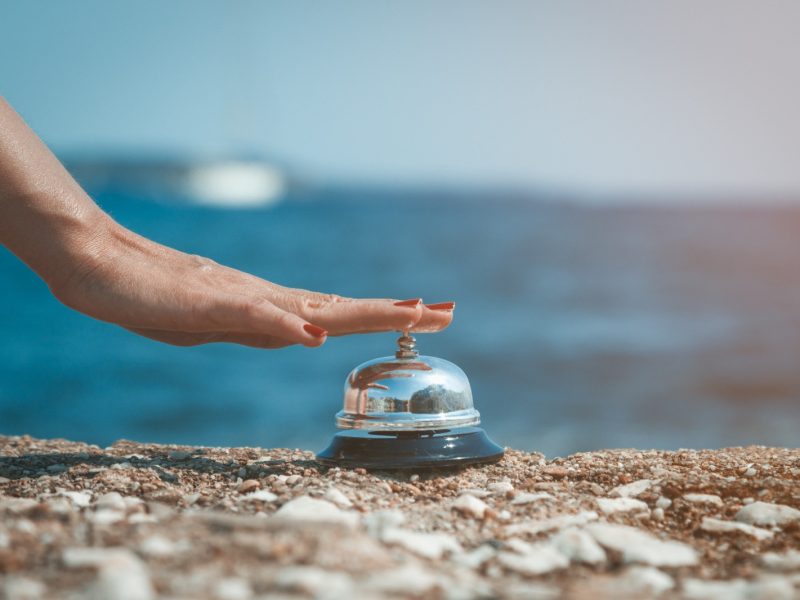WHO estimates 684,000 fatal falls occur each year; the elderly are at greater risk
US President Joe Biden is “fine” after tripping and falling over at an event in Colorado, news reports said quoting White House officials. Biden, who is USA’s oldest serving president at 80, was helped back onto his feet and appeared to be unhurt after Thursday’s fall. “I got sandbagged!” he joked to reporters later. The news about Biden should draw attention to injurious or fatal falls, particularly among the elderly.
WHO estimates there are some 684,000 fatal falls occur each year, making it the second leading cause of unintentional injury after road traffic mishaps. “According to statistics, about 14 per cent to 53 per cent fatal and non-fatal injuries in the elderly (above the age of 65) are due to falls, with the associated mortality standing at as high as 86 per cent. Although falls are a common occurrence in the elderly, it is their associated complications that can make matters worse. Recovery from falling also becomes difficult after a certain age,” says Dr Vishal Sehgal, president of Portea Medical, a homecare services company.
Work Towards Preventing Falls
Falls are especially found in people over sixty years old. The good news is falls can be prevented. “The landscape of fall prevention for senior citizens has witnessed a remarkable breakthrough, says Dr Varun Gupta, Chief Business officer, Antara Assisted Care Private Limited- “Unlike traditional fall risk assessments that are often conducted just once a year, the advanced algorithm leverages the power of daily assessments. By monitoring key elements integral to fall risk, including physiological trends, gait analysis, sleeping patterns, and historical data, tech stack can offer a remarkably accurate and dynamic evaluation of an individual’s vulnerability to falls.”
One can start by analyzing the key risk factors that lead to a fall. There are two primary reasons – one, at the level of the individual and two, in the spaces he lives.
Let’s examine the aspect of the individual first. While all people who fall are at risk of injury, the age, gender and health of the individual can affect the type and severity of injury. Older people have the highest risk of death or serious injury arising from a fall and the risk increases with age.
Dr Meinal Chaudhry, director for radiodiagnosis and intervention radiology and chief of strategy for digital marketing and corporate communications at Aakash Healthcare Super Speciality Hospital shares some of the top reasons for falls, “Sarcopenia or weak muscles especially in the legs leads to falls. As we age, we lose muscle mass which routinely starts from the lower body upwards. Muscle strengthening exercises help a lot to slow down Sarcopenia. Gait abnormalities or unsteady walk can arise due to loss of muscle strength or due to uncoordinated gait in various neural disorders like Parkinsonism or cerebellar dysplasia. Proper treatment of underlying conditions can lead to preventions of such falls. Postural hypotension or black outs is the biggest cause of falls in the bathroom of young adults as well as elderly. There is a sudden blackout when we stand from a sitting/ lying down position. Persons who face this condition should take good time to change their position for example. They should sit for 2-3 min after getting up from a lying position and then stand slowly. Foot problems including pain and deformities – pain in the knee, hip or foot can lead to unstable gait and falls. Conditions like flat foot / club foot or neuropathy caused by Diabetes can lead to falls. Addressing the underlying condition like physiotherapy and right shoes for flat foot, surgical correction of clubfoot and good sugar control and physiotherapy can help the patients. Vision problems in kids, adults or elderly can lead to recurrent falls. The predominant causes in different age groups can be different– like refractive errors in kids and adults and glaucoma and cataract in elderly. Congenital blindness or cataract can also present with fall in children.”
Mental health issues like panic attack, anxiety and depression can lead to falls as they can make a person less aware of the falls. Besides, certain medications such as sleep medicine, anti-psychotic drugs, antidepressant drugs – all can lead to a fall. Sometimes, substance abuse or drug withdrawal can cause disorientation and lack of coordination.
Spaces: Fall Prone or Fall Free
Does your physical space make you more prone to falls? Retirement communities tend to perfect the art of creating fall free spaces. Here, the idea is to avoid simple causes of stumbling due to uneven flooring, slippery floors, tripping over furniture, or other obstacles- something which can be replicated in regular homes. Says Ankur Gupta, Joint Managing Director, “Structural changes can be made to reduce the risk of falls. For example, installing the right flooring in high-risk areas like sports areas and adding grab rails in common areas like lobbies, especially in toilets, can provide additional support. The first step is to identify the common causes of falls. To prevent such incidents, it is important to ensure proper lighting in the home and other accessible areas. Installing night lamps can also help, as seniors may be more prone to falls when getting up during the night. Evening lighting also plays a crucial role in fall prevention. Marking potential dangers with reflective black and yellow tape can improve visibility and reduce the risk of falls.”
He adds that wearing the right shoes is another important factor in preventing falls. We learn from past falls and identify potential issues. These could include infrastructure problems, medication side effects that cause drowsiness, or inappropriate footwear. Normally the reason is either one of the above-mentioned or a combination. Once the issue is identified, we address it and take steps to reduce the risk of future falls.
How to avoid falling
What are the few things one can fix to avoid a fall? There are certain preventive measures one can take at home to prevent an at-home elderly from falling and getting injured. Dr. Vishal Sehgal, President, Portea Medical shares some insights.
- Medication should be given to the elderly at appropriate intervals as prescribed by the doctor. Skipping medication can cause the body to become weak and thereby result in falls.
- It is important for the elderly to get enough physical activity for their age. This will help in improving their overall health, maintain agility and quality of life.
- The best way to prevent falls is to maintain cleanliness at home and avoid any clutter. Stacks of old newspapers and magazines and other items that can come in the way of an elderly should be kept aside.
- Many a time, home fixtures can be the causative factor. Fix the loose carpet, rugs, or anything else that may seem off the place at home. While repairing, ensure that these are elderly friendly the next time around.
- Grab bars and handrails should be installed at all crucial points. Be it going up and down the stairs, in and out of the washroom or any other place, there should be adequate provisions for the elders to support themselves.
- A home with inadequate lighting is not suitable for the elderly. Make sure to install brighter lights especially in places such as the stairways and hallways. You could also fit night-lights in the bedroom so that they are able to see well even at night.
- Ensure that non-slip mats are placed in the kitchen and bathrooms, as these are the most accident-prone areas.
The Role of Family and Caregivers
Caregivers play a pivotal role in fall prevention as well. They should be educated on identifying potential fall risks, assisting with mobility, and providing a safe environment for their loved ones. Regular communication with healthcare professionals can help caregivers stay informed about best practices and address any concerns promptly. Since prevention is always better than cure, caregivers and individuals must be careful to avoid slipping on wet floors, while walking downstairs, etc. Having a proper balanced diet and taking calcium supplements from a young age boosts bone density and strength, thus enabling faster recovery from the effects of falling- fractures, cracks in bones, sprains, etc. Medical conditions such as osteoporosis, balance disorders, and certain medications can increase the risk of falling. Conducting regular health check-ups, managing chronic conditions, keeping a track on blood pressure and sugar levels, and adjusting medications can significantly mitigate these risks.
Price Chart on Fall Prevention
Fix the fall factors
| Risk Factor | Price (Rs) |
| Person’s Risk Assessment Review with Healthcare Professional (exercise and medication review with the doctor, vision checks, shoe assessment etc) |
A consult costs Rs 700-1,500 |
| Space Assessment Review with Design Expert (home safety review) | A consult costs Rs 2,500- 3,500 |
| Grab Bars | 4,990-6,290 |
| Anti Slip Shower Mat 40 x 60 | 499-1,499 |
| Laser Lights | 549-1,500 |
Source: Market Research




